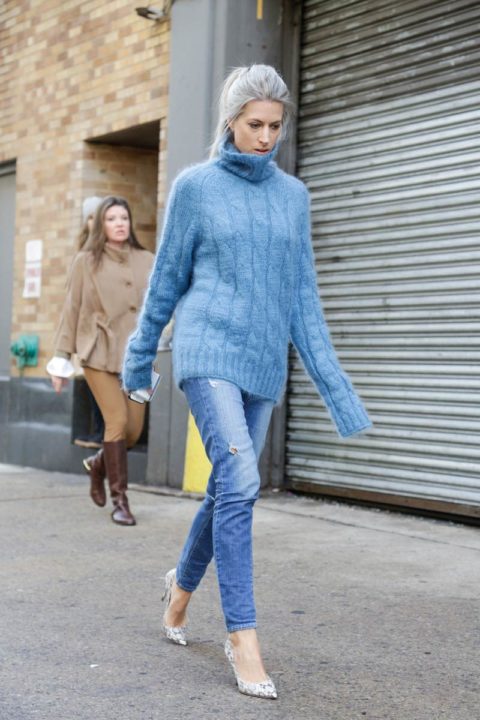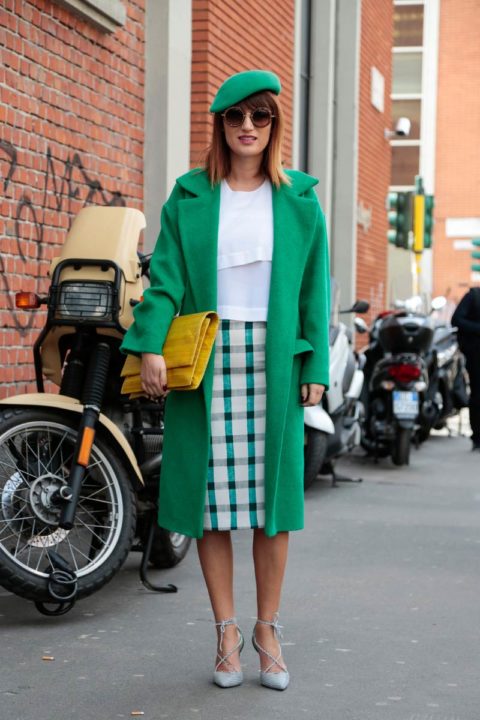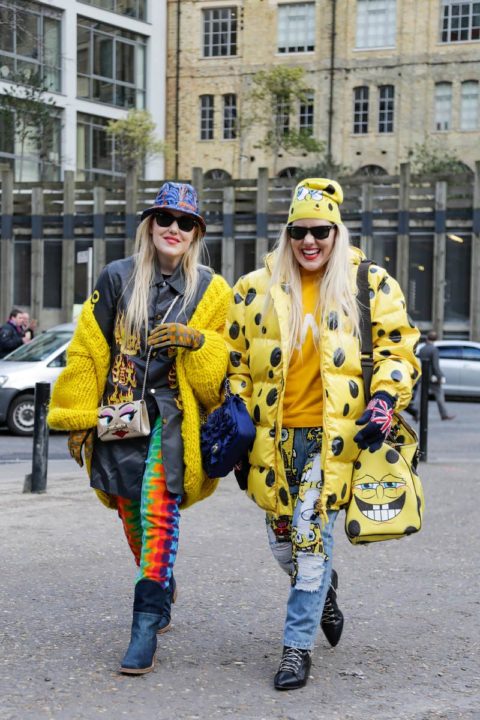Is black the new black? According to a recent study released by British retailer Buy T-Shirts Online, a wholesale supplier for companies like American Apparel, the answer is a resounding (wait for it) YES! The survey asked 1,000 people to evaluate images of the opposite sex, which were identical save for the colour of the t-shirt they were wearing. Results found that test subjects singled out black as the leader in confidence, intelligence, and sexiness.
Now, considering this company is in the business of hawking tees, we might want to consider their findings with a certain level of skepticism, even though the charms of black have long been championed by the fashion set. It’s no secret that black is thought to be the most slimming colour and that it also exudes a level of authority, unfussiness, and sophistication. On the flip side, yellow, orange, and pink were all found to be colours associated with a low intellect (sorry, Elle Woods).
Having a visceral response to colour is nothing new; in fact, there are psychological traits that have been attributed to each. They’re the reason why a red dress is inexplicably alluring, or why a blue sweater is so comforting. Colour psychology is a highly influential factor in human behavior, and is controlled by a variety of factors such as gender, age, and culture. It is also heavily used in marketing to help impact consumers perception of goods and instill brands with personality traits, such as Victoria’s Secret being associated with fun, flirty pink and H&R Block opting for a financially savvy green.
Want to know more about what each colour in the spectrum means? Click through our gallery to get the scoop on which shades will work best for all your outfit needs.
colour-psychology-01
Black
The appeal of black may lie in its contradictory nature—it is simultaneously all colours and no colours. Those kinds of existential implications are perhaps what perpetuate black’s mysterious appeal. It also implies an air of efficiency and no-nonsense competence, making it the perfect choice to wear when meeting with a potential employer.
colour-psychology-02
Gray
Despite getting tangled up in the fiery passion of all that 50 Shades business, gray is actually very middle of the road, falling between the two extremes of black and white. It is considered timeless and reliable—a sterling reputation, you might say.
colour-psychology-03
Brown
Brown sometimes gets a bad rap for being dowdy, but it can actually incite feelings of strength and stability—after all, what could be more rock solid than the colour of terra firma itself?
colour-psychology-04
Violet
The shortest wavelength perceptible to the human eye, violet is believed to have spiritual qualities that encourage deep contemplation or meditation. It is because of this association with higher powers that royalty were quick to latch onto it, making it a colour of luxury and opulence.
colour-psychology-05
Blue
Black may be the sartorially preferred shade, but if you ask people what their favourite is, the majority will likely choose blue. Seeing blue causes the body to discharge calming chemicals that help to relieve stress. Blue can also stimulate concentration and loyalty, which is perhaps the reason that so many uniforms are keen to utilize it.
colour-psychology-06
Green
Green is—well, let’s just say it: the colour of $$monay$$! It possesses a bevvy of less superficial associations as well though, the primary being balance, which could be due to the fact that the eye doesn’t require any adjustments to process it.
colour-psychology-07
Yellow
Yellow causes the release of serotonin, which is why it is considered optimistic and associated with happiness and laughter. It also has the power to inspire creative thoughts (there’s a reason legal pads of paper are yellow!)
colour-psychology-08
Orange
Orange is definitely not a shade for wallflowers—it stands for all things ostentatious, and is unapologetic about doing so. It is tied to energy and ambition, which could be due to the fact that it also marks the dawn of each new day.
colour-psychology-09
Red
The longest wavelength in the spectrum, red is a sign of power. If you want to attract attention (why stop lights and signs are red), this is your hue. It has the ability to appear nearer than it is, making it stand out in a crowd, and is even able to increase our pulse rate. A caveat? It’s also associated with arrogance and aggression—so maybe leave that red dress in your closet when you’re heading to the office.
colour-psychology-10
Pink
Pink is a tint of red, but instead of stimulating, it soothes. Thought of as the most traditionally feminine colour, it is seen as nurturing and romantic.
colour-psychology-11
White
White is the absorption of all colours, creating a protective barrier around itself that seems to prohibit contact. It represents cleanliness and hygiene (why doctors’ lab coats are white), along with purity (ye ole wedding dress).
The post Colour psychology 101: Here’s what every shade in your wardrobe says about you appeared first on FASHION Magazine.
Use left/right arrows to navigate the slideshow or swipe left/right if using a mobile device










